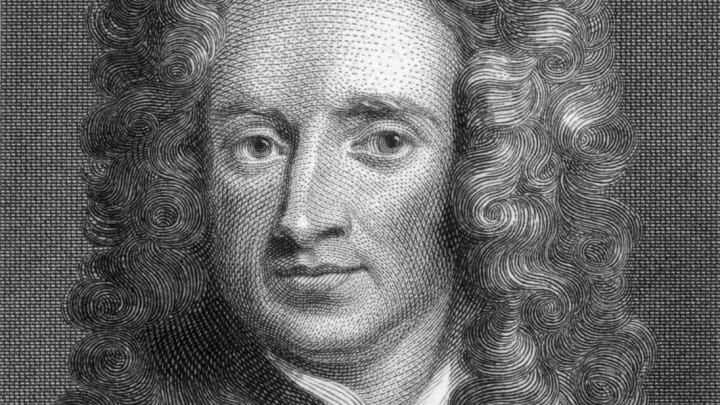Long before he gained fame as a mathematician and scientist, Sir Isaac Newton was a young artist who lacked a proper canvas. Now, a 350-year-old sketch on a wall, discovered at Newton’s childhood home in England, is shedding new light on the budding genius and his early fascination with motion, according to Live Science.
While surveying Woolsthorpe Manor, the Lincolnshire home where Newton was born and conducted many of his most famous experiments, conservators discovered a tiny etching of a windmill next to a fireplace in the downstairs hall. It’s believed that Newton made the drawing as a boy, and may have been inspired by the building of a nearby mill.

Newton was born at Woolsthorpe Manor in 1642, and he returned for two years after a bubonic plague outbreak forced Cambridge University, where he was studying mechanical philosophy, to close temporarily in 1665. It was in this rural setting that Newton conducted his prism experiments with white light, worked on his theory of “fluxions,” or calculus, and famously watched an apple fall from a tree, a singular moment that’s said to have led to his theory of gravity.
Paper was a scarce commodity in 17th century England, so Newton often sketched and scrawled notes on the manor’s walls and ceilings. While removing old wallpaper in the 1920s and '30s, tenants discovered several sketches that may have been made by the scientist. But the windmill sketch remained undetected for centuries, until conservators used a light imaging technique called Reflectance Transformation Imaging (RTI) to survey the manor’s walls.

RTI uses various light conditions to highlight shapes and colors that aren’t immediately visible to the naked eye. “It’s amazing to be using light, which Newton understood better than anyone before him, to discover more about his time at Woolsthorpe,” conservator Chris Pickup said in a press release.
The windmill sketch suggests that young Newton “was fascinated by mechanical objects and the forces that made them work,” added Jim Grevatte, a program manager at Woolsthorpe Manor. “Paper was expensive, and the walls of the house would have been repainted regularly, so using them as a sketchpad as he explored the world around him would have made sense," he said.
The newly discovered graffiti might be one of many hidden sketches drawn by Newton, so conservators plan to use thermal imaging to detect miniscule variations in the thickness of wall plaster and paint. This technique could reveal even more mini-drawings.
[h/t Live Science]
